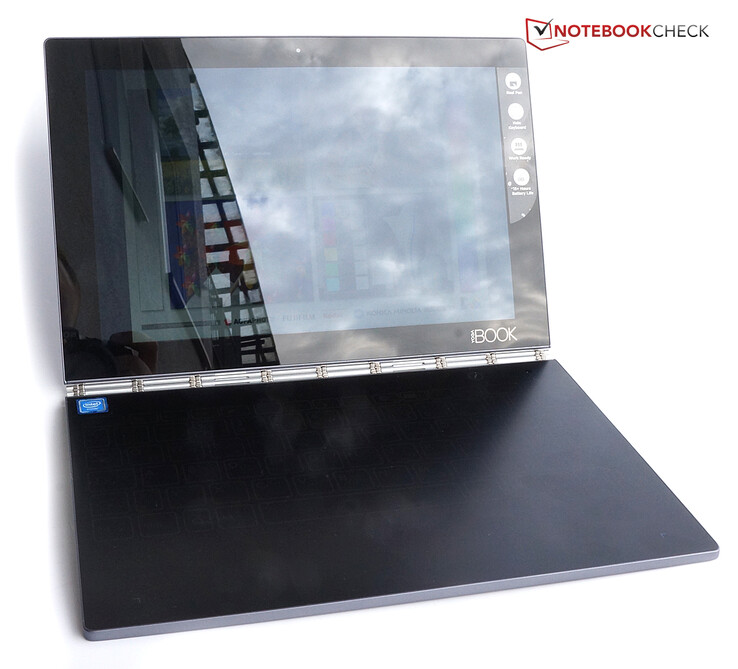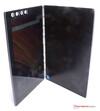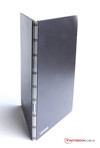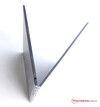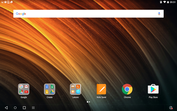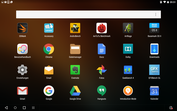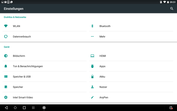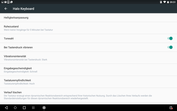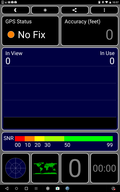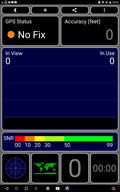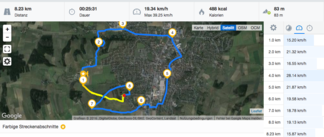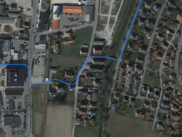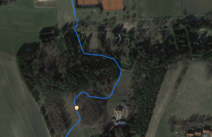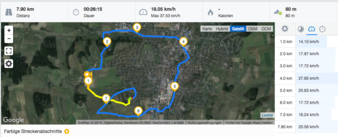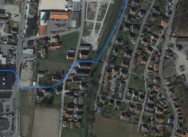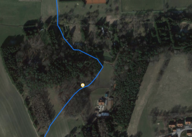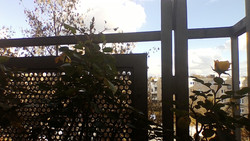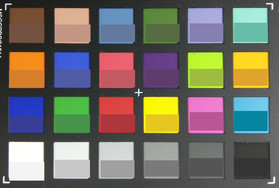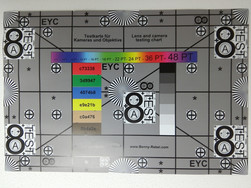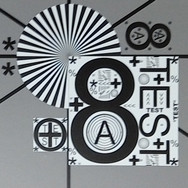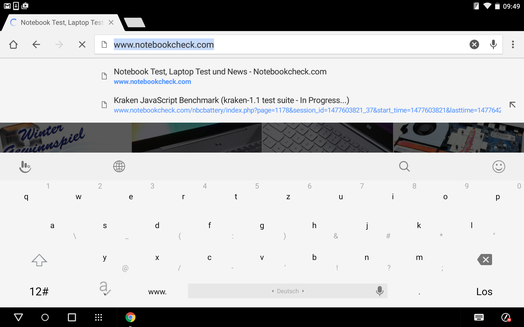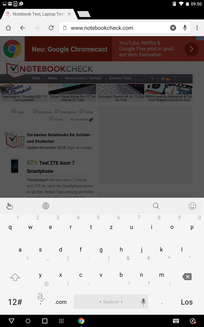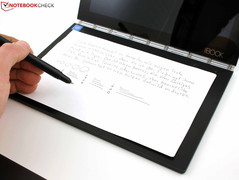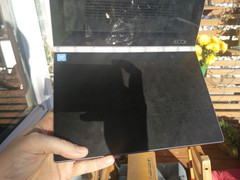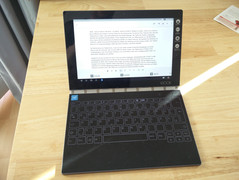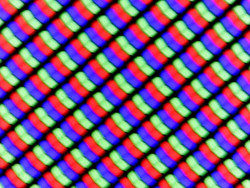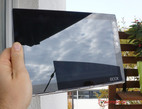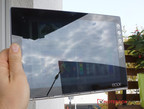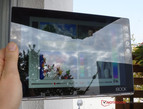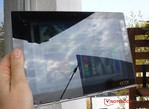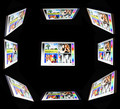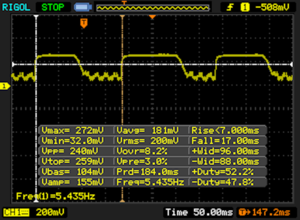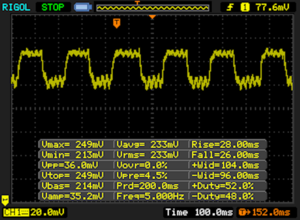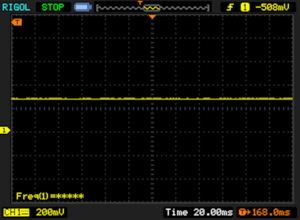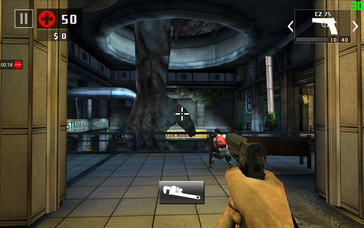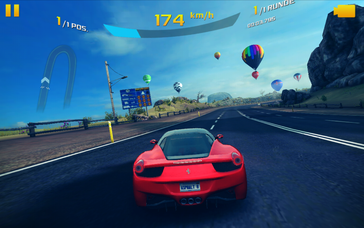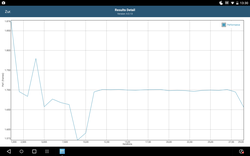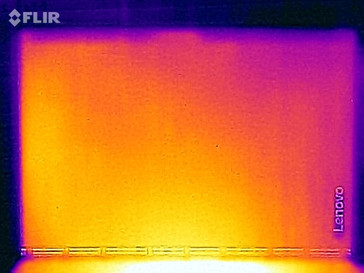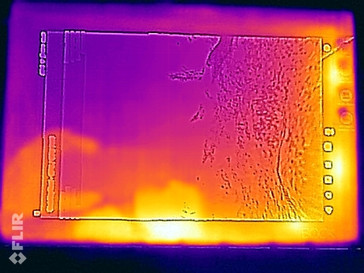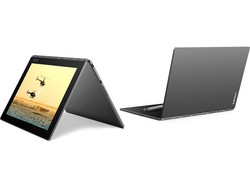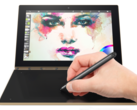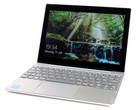Lenovo Yoga Book Android YB1-X90F Convertible Review
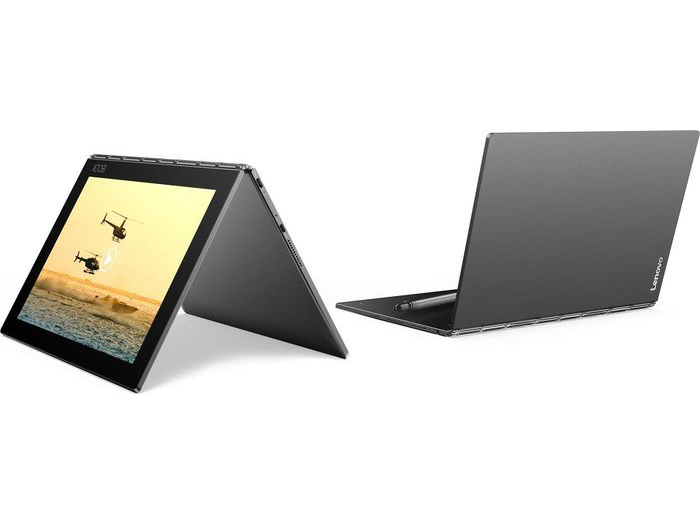
For the original German review, see here.
Every now and then, Lenovo brings surprising concepts to the market. They have designed a tablet with a beamer (Yoga Tab 3 Pro) and a modular ThinkPad X1 Tablet. The new Yoga Book is also an innovative device: instead of packing a keyboard dock for their tablet, Lenovo has designed a graphics tablet which can turn into a keyboard and a touchpad when needed. The stylus is a special highlight as it comes with two interchangeable heads: a ball-pen with real ink for paper and a soft head for the screen. If you place a piece of paper on the graphics tablet, you can comfortably write and draw while the tablet digitizes all your notes.
We have already tested the Windows version of the Yoga Book and found it to be an exciting device. Of course, the Yoga Book is a niche device and will not find favor with every user. Lenovo has now released the Yoga Book with Android and we want to find out what it can do: does the digitization work as well as on the Windows device? Who would be interested in this device? And of course: can the Android version last longer than the Yoga Book with Windows 10?
It is hard to find direct competitors, as Lenovo has created a special concept. We will be comparing the test model to the Google Pixel C and the iPad Pro 9.7. We will also include the Sony Xperia Z4 Tablet for comparison, as it is a high-end tablet. We will be actively comparing the Windows version of the Yoga Book with our test model to determine how the two devices differ.
Case
The test model has the same case as the Windows device. It is available in anthracite or gold and has impressive sturdiness thanks to the strong materials used. The "watchband" hinges are another highlight of the case as they not only look good, but they also work well.
The tablet seems to be nearly impervious to pressure. However, under very strong pressure, the display can distort. It can also be bent quite a bit.
As the graphics tablet with the Halo keyboard cannot be removed, the weight of the device is set at 690 grams. This means that our test model is heavier than traditional tablets. It even weighs more than the Google Pixel C with a standard keyboard dock. However, the Lenovo Yoga Book can still be easily transported in a bag and is lighter than the slimmest Ultrabooks.
Connectivity
The connectivity of the Yoga Book Android is a double-edged sword: on the one hand, there are definitely convertibles with more ports. On the other hand, the Yoga Book has an extra mini-HDMI port alongside the USB port (USB 2.0), which is special for Android tablets. A Type-C USB port would have raised the value of this device greatly, as there are already various docks available for this port.
Our test model is not equipped with a WWAN module, which saves the buyer around 100 Euros (~$108). We tested the performance of this module in the Windows version of the Yoga Book.
The tablet has a microSD slot, which is hidden behind a flap like in the WWAN model. A SIM tool is necessary to open this flap. Although this is a little inconvenient, it is a common procedure for tablets and smartphones. The memory can be expanded by up to 128 GB.
USB-OTG is supported. This means that external storage devices can be connected via an adapter to the USB port. However this could raise conflicts, as the USB port is also used for charging. Wireless Display is not available.
Software
Thanks to projects like "Android x86", Android can run well on x86 processors. To increase user comfort, the menu bar is placed on the bottom of the screen: all open apps are displayed as symbols on the bar (like the Windows bar). The user can quickly swap between apps but the symbols cannot be pinned to the start bar.
Apps are opened in windowsand can be placed next to each other or in full screen mode (...like Windows). The only flaw: the classic Android menu buttons (Home, Back and Overview) are a little too small. All-in-all, this bar is a good addition.
Lenovo has installed Android 6.0.1 on the device. The security patches are from July 1, 2016 and are in need of an update.
The manufacturer has also packed in some software. There are two interactive apps for users to get to know the tablet. However, it is not possible to pause them once they start. Lenovo uses the Google Office suite and ArtRage for drawing with the graphics tablet.
Communication and GPS
As mentioned before, our test model comes without WWAN, but the user can still access the WWW with the WLAN in this device. The WLAN module supports the 802.11 a/b/g/n/ac standards. In our practical WLAN test, the device is placed one meter from the reference router, the FritzBox 6490, and the Yoga Book Android performs quite well: 452 MB/s while receiving and 322 MB/s while sending. There are definitely faster models out there, but the tablet works well enough for everyday use.
The reception quality is very good: near the router, the tablet can load websites quickly and has full bars. At 10 meters with three walls between the device and the router, the reception drops to 3/4 bars, but the websites are loaded just as fast as before (subjective).
| Networking | |
| iperf Server (receive) TCP 1 m | |
| Asus TransformerBook T302CA-FL010T | |
| Lenovo Yoga Book Android YB1-X90F | |
| Lenovo Yoga 510-15IKB 80VC000XGE (jseb) | |
| iperf Client (transmit) TCP 1 m | |
| Asus TransformerBook T302CA-FL010T | |
| Lenovo Yoga Book Android YB1-X90F | |
| Lenovo Yoga 510-15IKB 80VC000XGE (jseb) | |
The GPS module of the Yoga Book Android was a problem for us: it could not locate us indoors or outdoors. It is normal for devices to have poor reception indoors, but the fact that the tablet could not locate a satellite outdoors is a bit worrisome. Even Google Maps was not able to pinpoint the device and we believe that the test model might have a faulty GPS module.
We ran another test to check the GPS module. We took the tablet with our reference professional navigation device, the Garmin Edge 500, out for a bike ride. Although the GPS module of the Yoga Book had reception, it was not very accurate, as the device set far too few measurement points. The Garmin device produced a more accurate path as it recorded more points.
All-in-all, the Yoga Book should not be your first choice as a navigation device.
Cameras
The Yoga Book offers two decent cameras (for a tablet): we had to search for the 8 MP main camera as it sits above the Halo keyboard. The 2 MP front camera is placed on top of the screen.
Both cameras do a decent job. The user should not expect much from the front camera, due to the low resolution and poor dynamics. However, the pictures do have decent colors and sharpness. This camera suffices for video chats.
The main camera takes colorful pictures. Objects have a color fringe and the recorded pictures are from the level of the detail offered by the Apple iPad Pro 9.7. Still, the pictures of the tablet have decent sharpness and enough details for the occasional snapshot. Videos can be recorded in 1080p with 30 frames per second. The brightness switch from dark to bright subjects is fast but cannot be compared to high-quality cameras. In good lighting conditions, the camera can be used to record videos.
To further analyze the picture quality, we brought the test model to our lab and took a few pictures with pre-defined lighting. We checked the color accuracy and found the camera to be far off the ideal values: the colors are too bright.
The reference card seems too blurry and it seems as if the camera cannot come to terms with the studio lighting and ends up over-exposing the image. When zoomed in, the color patches appear grainy and exhibit clear compression artifacts.
Accessories and Warranty
The delivery of the test model includes a USB cable, the digitizer pen with removable heads and a magnetic Book Pad with paper. A SIM tool is also provided. This will help users open the SIM and/or microSD-card slots (depending on the model).
Lenovo offers a fitting sleeve for roughly 40 Euros (~$43). The RealPen can be bought again for 50 Euros (~$54). For 10 Euros (~$11), the user will receive three ink refills. Paper and a replacement Book Pad will also be available soon.
Not exactly customer-friendly: after 12 months, the warranty runs out. Most other manufacturers offer 24 months.
Input Devices and Interface
One of the most exciting aspects of the Yoga Book is the input devices. This innovative concept for the keyboard and touchpad requires some time to get used to. The display is a standard touchscreen, which means, depending on the mode, the keyboard is shown as an on-screen keyboard or it is displayed as backlit keys on the graphics tablet. The latter is dubbed the "Halo keyboard".
The technology for the graphics tablet originates from Wacom (graphics tablet experts). The stylus, dubbed RealPen, works without batteries and can be used with a soft or ball-pen head. There is no slot for the stylus or the "Book Pad" in the tablet. However, the Book Pad magnetically sticks to the graphics tablet and offers many pages to write on. While the user comfortably writes with the ball-pen head of the stylus on the pad, their notes will be digitized.
This works incredibly well: text and diagrams are quickly and accurately transferred to a digital format (see YouTube video below). There is a slight delay between the input and the digitization but it does not make the process inconvenient.
The RealPen can also work on the touchscreen, but the user must first swap out the ball-pen head for the soft head. The display supports the AnyPen technology from Lenovo which allows the user to take any object, from a carrot to a pen, and use it for touch input. Of course, this will result in different levels of input accuracy, depending on the object used. The RealPen or the finger remain the most reliable input devices available.
The Halo keyboard automatically turns on and off, depending on the position of the 360-degree graphics tablet. Despite the keys being simply backlit areas, the keyboard works very nicely. Lenovo recommends first-time users to keep their eyes on the keyboard while typing, as this will allow them to get more comfortable with the device and later type faster without needing to look down. The keyboard offers automatic corrections on the screen, which further simplify the typing process. The feedback is good and is provided via sounds and vibration.
The on-screen keyboard of the touchscreen is named "TouchPal". It offers various settings and input options. Each key represents two characters. This design may not appeal to all users. Personally, we prefer the standard Google keyboard, as it provides a better overview. It is possible to change the keyboard from the settings or load another one from the Play store.
Additional details about the input devices can be found in the "Input Devices & Interface" section of the Yoga Book with Windows Review.
Display
The 10.1-inch display of the Yoga Book may not be optimally sized for everyday, office work. However, on-the-go, it seems to be an ideal compromise between portability and size. The FHD screen performs well in our tests: the brightness measures 421 cd/m², which is even brighter than the Yoga Book with Windows. The illumination is also more balanced at 86%, but there is room for improvement. The differences in brightness all over the screen are visible when looking at large color areas.
| |||||||||||||||||||||||||
Brightness Distribution: 86 %
Center on Battery: 449 cd/m²
Contrast: 1403:1 (Black: 0.32 cd/m²)
ΔE ColorChecker Calman: 4.7 | ∀{0.5-29.43 Ø4.77}
ΔE Greyscale Calman: 4.5 | ∀{0.09-98 Ø5}
94.3% sRGB (Calman 2D)
Gamma: 2.22
CCT: 7122 K
| Lenovo Yoga Book Android YB1-X90F IPS, 1920x1080, 10.1" | Google Pixel C LTPS, 2560x1800, 10.2" | Apple iPad Pro 9.7 IPS, 2048x1536, 9.7" | Sony Xperia Z4 Tablet Triluminos display with X-Reality, 2560x1600, 10.1" | Lenovo Yoga Book 2016 Windows 64GB LTE IPS , 1920x1080, 10.1" | |
|---|---|---|---|---|---|
| Screen | -12% | 23% | -41% | -1% | |
| Brightness middle (cd/m²) | 449 | 487 8% | 523 16% | 471 5% | 382 -15% |
| Brightness (cd/m²) | 421 | 510 21% | 500 19% | 457 9% | 363 -14% |
| Brightness Distribution (%) | 86 | 91 6% | 93 8% | 92 7% | 83 -3% |
| Black Level * (cd/m²) | 0.32 | 0.39 -22% | 0.52 -63% | 0.46 -44% | 0.37 -16% |
| Contrast (:1) | 1403 | 1249 -11% | 1006 -28% | 1024 -27% | 1032 -26% |
| Colorchecker dE 2000 * | 4.7 | 5.24 -11% | 1.1 77% | 8.69 -85% | 3.61 23% |
| Colorchecker dE 2000 max. * | 11.1 | 1.9 83% | 7.92 29% | ||
| Greyscale dE 2000 * | 4.5 | 7.95 -77% | 1.4 69% | 11.24 -150% | 3.77 16% |
| Gamma | 2.22 99% | 2.16 102% | 2.11 104% | 2.17 101% | 2.43 91% |
| CCT | 7122 91% | 6565 99% | 6662 98% | 9508 68% | 6760 96% |
| Color Space (Percent of AdobeRGB 1998) (%) | 62.97 | ||||
| Color Space (Percent of sRGB) (%) | 99.55 | 99 |
* ... smaller is better
At 0.32 cd/m², the black value of the Yoga Book Android is very low and results in a contrast ratio of 1,403:1. Once again, our test model can top the Windows model. The display cannot be optimized with the preinstalled apps or the available settings.
However, this is not really necessary: although the colors are a bit too bright, the display does a good job of presenting content. The objective measurements using a spectrophotometer and the CalMAN software confirm our impression: there is a noticeable blue tinge, but it is far lighter than that of other tablets. The color deviations might be a little higher than those of the Windows version of the Yoga Book, but both devices do a really good job and are only beaten by the iPad Pro 9.7.
Outdoors, the max brightness is just high enough to recognize content on the reflective display. The brightness sensor works well. The Halo keyboard is also a problem, as the keys are hard to recognize in bright lighting.
The viewing angles are very good and we did not observe any color deviations at extreme angles.
Display Response Times
| ↔ Response Time Black to White | ||
|---|---|---|
| 24 ms ... rise ↗ and fall ↘ combined | ↗ 7 ms rise | |
| ↘ 17 ms fall | ||
| The screen shows good response rates in our tests, but may be too slow for competitive gamers. In comparison, all tested devices range from 0.1 (minimum) to 240 (maximum) ms. » 53 % of all devices are better. This means that the measured response time is worse than the average of all tested devices (20.2 ms). | ||
| ↔ Response Time 50% Grey to 80% Grey | ||
| 54 ms ... rise ↗ and fall ↘ combined | ↗ 28 ms rise | |
| ↘ 26 ms fall | ||
| The screen shows slow response rates in our tests and will be unsatisfactory for gamers. In comparison, all tested devices range from 0.165 (minimum) to 636 (maximum) ms. » 90 % of all devices are better. This means that the measured response time is worse than the average of all tested devices (31.6 ms). | ||
Screen Flickering / PWM (Pulse-Width Modulation)
| Screen flickering / PWM not detected | |||
In comparison: 53 % of all tested devices do not use PWM to dim the display. If PWM was detected, an average of 8083 (minimum: 5 - maximum: 343500) Hz was measured. | |||
Performance
The tablet is equipped with an Intel Atom x5-Z8550, which is an SoC with 4 x86 cores from the "Airmont" Intel series. The processor can run at 1.44 - 2.4 GHz, which means the Yoga Book Android places well against other tablets. The super-fast (and expensive) iPad Pro 9.7 takes the crown in this section. The same SoC from our test model can be found in the Windows version of the Yoga Book.
The Google Pixel C is very close to our test model in processor and system benchmarks. Subjectively, both devices should be equally fast.
The graphics chip of our test model is the Intel HD Graphics (Cherry Trail). This places our device in the back of the queue in terms of performance.
| AnTuTu v6 - Total Score | |
| Apple iPad Pro 9.7 | |
| Google Pixel C | |
| Lenovo Yoga Book Android YB1-X90F | |
| 3DMark | |
| 1280x720 offscreen Ice Storm Unlimited Score | |
| Google Pixel C | |
| Apple iPad Pro 9.7 | |
| Sony Xperia Z4 Tablet | |
| Lenovo Yoga Book Android YB1-X90F | |
| 1280x720 offscreen Ice Storm Unlimited Graphics Score | |
| Google Pixel C | |
| Apple iPad Pro 9.7 | |
| Sony Xperia Z4 Tablet | |
| Lenovo Yoga Book Android YB1-X90F | |
| 1280x720 offscreen Ice Storm Unlimited Physics | |
| Google Pixel C | |
| Apple iPad Pro 9.7 | |
| Lenovo Yoga Book Android YB1-X90F | |
| Sony Xperia Z4 Tablet | |
| 2560x1440 Sling Shot OpenGL ES 3.0 | |
| Apple iPad Pro 9.7 | |
| Google Pixel C | |
| Sony Xperia Z4 Tablet | |
| Lenovo Yoga Book Android YB1-X90F | |
| 2560x1440 Sling Shot OpenGL ES 3.0 Graphics | |
| Apple iPad Pro 9.7 | |
| Google Pixel C | |
| Lenovo Yoga Book Android YB1-X90F | |
| 2560x1440 Sling Shot OpenGL ES 3.0 Physics | |
| Apple iPad Pro 9.7 | |
| Lenovo Yoga Book Android YB1-X90F | |
| Google Pixel C | |
| GFXBench (DX / GLBenchmark) 2.7 | |
| T-Rex Onscreen | |
| Apple iPad Pro 9.7 | |
| Google Pixel C | |
| Sony Xperia Z4 Tablet | |
| Lenovo Yoga Book Android YB1-X90F | |
| 1920x1080 T-Rex Offscreen | |
| Apple iPad Pro 9.7 | |
| Google Pixel C | |
| Sony Xperia Z4 Tablet | |
| Lenovo Yoga Book Android YB1-X90F | |
| GFXBench 3.0 | |
| on screen Manhattan Onscreen OGL | |
| Apple iPad Pro 9.7 | |
| Google Pixel C | |
| Sony Xperia Z4 Tablet | |
| Lenovo Yoga Book Android YB1-X90F | |
| 1920x1080 1080p Manhattan Offscreen | |
| Apple iPad Pro 9.7 | |
| Google Pixel C | |
| Sony Xperia Z4 Tablet | |
| Lenovo Yoga Book Android YB1-X90F | |
| GFXBench 3.1 | |
| on screen Manhattan ES 3.1 Onscreen | |
| Apple iPad Pro 9.7 | |
| Google Pixel C | |
| Sony Xperia Z4 Tablet | |
| Lenovo Yoga Book Android YB1-X90F | |
| 1920x1080 Manhattan ES 3.1 Offscreen | |
| Apple iPad Pro 9.7 | |
| Google Pixel C | |
| Sony Xperia Z4 Tablet | |
| Lenovo Yoga Book Android YB1-X90F | |
| PCMark for Android - Work performance score | |
| Google Pixel C | |
| Lenovo Yoga Book Android YB1-X90F | |
| Sony Xperia Z4 Tablet | |
| Geekbench 4.0 | |
| 64 Bit Single-Core Score | |
| Lenovo Yoga Book Android YB1-X90F | |
| 64 Bit Multi-Core Score | |
| Lenovo Yoga Book Android YB1-X90F | |
| Compute RenderScript Score | |
| Lenovo Yoga Book Android YB1-X90F | |
The Yoga Book Android cannot take the lead in web surfing. Our device places in the middle of the table and delivers a good surfing experience. Once again, the Apple iPad Pro 9.7 is much faster.
| JetStream 1.1 - Total Score | |
| Apple iPad Pro 9.7 | |
| Google Pixel C | |
| Lenovo Yoga Book Android YB1-X90F | |
| Octane V2 - Total Score | |
| Apple iPad Pro 9.7 | |
| Lenovo Yoga Book Android YB1-X90F | |
| Sony Xperia Z4 Tablet | |
| Google Pixel C | |
| Mozilla Kraken 1.1 - Total | |
| Google Pixel C | |
| Lenovo Yoga Book Android YB1-X90F | |
| Sony Xperia Z4 Tablet | |
| Apple iPad Pro 9.7 | |
| WebXPRT 2015 - Overall | |
| Apple iPad Pro 9.7 | |
| Google Pixel C | |
| Lenovo Yoga Book Android YB1-X90F | |
| Sony Xperia Z4 Tablet | |
* ... smaller is better
The memory transfer speeds of the Yoga Book Android place it solidly in the middle of the table again. The sequential read/write speeds are rather slow, while the random access speeds are faster than the other Android tablets being used for comparison.
The memory card read speeds using our referenced micro-SD card, the Toshiba Exceria Pro M401, paint a similar picture: the access speeds are fine, but they are not great.
| AndroBench 3-5 | |
| Sequential Read 256KB | |
| Sony Xperia Z4 Tablet | |
| Google Pixel C | |
| Lenovo Yoga Book Android YB1-X90F | |
| Sequential Write 256KB | |
| Google Pixel C | |
| Sony Xperia Z4 Tablet | |
| Lenovo Yoga Book Android YB1-X90F | |
| Random Read 4KB | |
| Lenovo Yoga Book Android YB1-X90F | |
| Sony Xperia Z4 Tablet | |
| Google Pixel C | |
| Random Write 4KB | |
| Sony Xperia Z4 Tablet | |
| Lenovo Yoga Book Android YB1-X90F | |
| Google Pixel C | |
| Sequential Read 256KB SDCard | |
| Lenovo Yoga Book Android YB1-X90F | |
| Sequential Write 256KB SDCard | |
| Lenovo Yoga Book Android YB1-X90F | |
Games
The Yoga Book limits its screen to a mere 30 frames per second, but it achieves this frame rate consistently in both games we tested: Asphalt 8: Airborne and Dead Trigger 2. Simpler games, such as, Angry Birds should not be any trouble for our tablet. In short, the device has enough power to run similar games.
The touch screen and position sensor work without issues.
| Asphalt 8: Airborne | |||
| Settings | Value | ||
| high | 30 fps | ||
| very low | 30 fps | ||
| Dead Trigger 2 | |||
| Settings | Value | ||
| high | 30 fps | ||
Emissions
Temperature
The surface temperatures can be summarized quickly: at no time was the tablet too hot. At a max temperature of 31.3 °C, the tablet is barely hot. The power adapter stays comfortably cool.
During the GFXBench battery test, we test to see if the system throttles after long periods of load. The speeds of the tablet fluctuate significantly, but they always come back to the same value. We assume that due to the relatively low heat emissions, the SoC can offer full performance even after longer periods of load.
(+) The maximum temperature on the upper side is 29.2 °C / 85 F, compared to the average of 35.4 °C / 96 F, ranging from 19.6 to 60 °C for the class Convertible.
(+) The bottom heats up to a maximum of 31.3 °C / 88 F, compared to the average of 36.8 °C / 98 F
(+) In idle usage, the average temperature for the upper side is 26.3 °C / 79 F, compared to the device average of 30.3 °C / 87 F.
(+) The palmrests and touchpad are cooler than skin temperature with a maximum of 29.2 °C / 84.6 F and are therefore cool to the touch.
(±) The average temperature of the palmrest area of similar devices was 27.9 °C / 82.2 F (-1.3 °C / -2.4 F).
Speakers
Lenovo has installed two stereo speakers in the device. They are seated on the left and right sides of the graphics tablet. According to our analysis, the speakers are decently loud and offer more bass than the comparison devices. The high notes are well balanced. The preinstalled Dolby app allows the user to tweak the sound output.
Classical music suffers from the ever-present high notes. However, pop music is a joy on this tablet. The device can fill a room well. Movies and speech also sound good.
The user can use the 3.5 mm audio jack or Bluetooth to connect external speakers or headphones and enjoy even better sound.
Lenovo Yoga Book Android YB1-X90F audio analysis
(±) | speaker loudness is average but good (79.3 dB)
Bass 100 - 315 Hz
(-) | nearly no bass - on average 19.6% lower than median
(±) | linearity of bass is average (10.7% delta to prev. frequency)
Mids 400 - 2000 Hz
(±) | higher mids - on average 5.5% higher than median
(±) | linearity of mids is average (8.4% delta to prev. frequency)
Highs 2 - 16 kHz
(+) | balanced highs - only 4.8% away from median
(+) | highs are linear (6.2% delta to prev. frequency)
Overall 100 - 16.000 Hz
(±) | linearity of overall sound is average (20.8% difference to median)
Compared to same class
» 54% of all tested devices in this class were better, 11% similar, 35% worse
» The best had a delta of 6%, average was 20%, worst was 57%
Compared to all devices tested
» 56% of all tested devices were better, 8% similar, 37% worse
» The best had a delta of 4%, average was 24%, worst was 134%
Google Pixel C audio analysis
(+) | speakers can play relatively loud (92.8 dB)
Bass 100 - 315 Hz
(-) | nearly no bass - on average 29.9% lower than median
(±) | linearity of bass is average (7.5% delta to prev. frequency)
Mids 400 - 2000 Hz
(+) | balanced mids - only 4.8% away from median
(±) | linearity of mids is average (7% delta to prev. frequency)
Highs 2 - 16 kHz
(±) | higher highs - on average 7.5% higher than median
(±) | linearity of highs is average (8.6% delta to prev. frequency)
Overall 100 - 16.000 Hz
(±) | linearity of overall sound is average (24.2% difference to median)
Compared to same class
» 75% of all tested devices in this class were better, 6% similar, 19% worse
» The best had a delta of 7%, average was 20%, worst was 129%
Compared to all devices tested
» 72% of all tested devices were better, 6% similar, 22% worse
» The best had a delta of 4%, average was 24%, worst was 134%
Apple iPad Pro 9.7 audio analysis
(+) | speakers can play relatively loud (90.6 dB)
Bass 100 - 315 Hz
(-) | nearly no bass - on average 23.2% lower than median
(±) | linearity of bass is average (8.6% delta to prev. frequency)
Mids 400 - 2000 Hz
(+) | balanced mids - only 4.7% away from median
(+) | mids are linear (4.9% delta to prev. frequency)
Highs 2 - 16 kHz
(+) | balanced highs - only 4.6% away from median
(+) | highs are linear (4.1% delta to prev. frequency)
Overall 100 - 16.000 Hz
(±) | linearity of overall sound is average (16.8% difference to median)
Compared to same class
» 41% of all tested devices in this class were better, 4% similar, 55% worse
» The best had a delta of 7%, average was 20%, worst was 129%
Compared to all devices tested
» 29% of all tested devices were better, 7% similar, 64% worse
» The best had a delta of 4%, average was 24%, worst was 134%
Lenovo Yoga Book 2016 Windows 64GB LTE audio analysis
(-) | not very loud speakers (67 dB)
Bass 100 - 315 Hz
(-) | nearly no bass - on average 22.9% lower than median
(±) | linearity of bass is average (7.4% delta to prev. frequency)
Mids 400 - 2000 Hz
(+) | balanced mids - only 2.3% away from median
(±) | linearity of mids is average (12.2% delta to prev. frequency)
Highs 2 - 16 kHz
(±) | higher highs - on average 5% higher than median
(±) | linearity of highs is average (11.5% delta to prev. frequency)
Overall 100 - 16.000 Hz
(±) | linearity of overall sound is average (27.9% difference to median)
Compared to same class
» 85% of all tested devices in this class were better, 2% similar, 13% worse
» The best had a delta of 6%, average was 20%, worst was 57%
Compared to all devices tested
» 84% of all tested devices were better, 3% similar, 13% worse
» The best had a delta of 4%, average was 24%, worst was 134%
Frequency diagram in comparison (checkboxes above can be selected)
Energy Management
Power Consumption
The good news is that the Yoga Android tablet needs less power than the Windows version. In addition, while idle, the Apple iPad Pro 9.7 consumes more power. At load, the device needs 11.26 W, which is relatively low.
While turned off, the Yoga Android tablet needs 0.12 W. This is a little too much. However, all-in-all, the device should have very good battery life, right?
| Off / Standby | |
| Idle | |
| Load |
|
Key:
min: | |
| Lenovo Yoga Book Android YB1-X90F 8500 mAh | Google Pixel C mAh | Apple iPad Pro 9.7 7306 mAh | Sony Xperia Z4 Tablet mAh | Lenovo Yoga Book 2016 Windows 64GB LTE 8500 mAh | |
|---|---|---|---|---|---|
| Power Consumption | -4% | -26% | -13% | ||
| Idle Minimum * (Watt) | 2.19 | 1.82 17% | 1.71 22% | 2 9% | |
| Idle Average * (Watt) | 4.3 | 4.26 1% | 7.55 -76% | 4.6 -7% | |
| Idle Maximum * (Watt) | 4.37 | 4.33 1% | 7.62 -74% | 5.7 -30% | |
| Load Average * (Watt) | 8.62 | 9.82 -14% | 8.39 3% | 11.5 -33% | |
| Load Maximum * (Watt) | 11.26 | 13.99 -24% | 12.08 -7% | 11.5 -2% |
* ... smaller is better
Battery Life
Yes, the battery life is good. In fact, it is clearly better than that of the Windows version. The tablet can be used to surf with the WLAN for a good 10 hours. However, the Google Pixel C and the Apple iPad Pro 9.7 can last much longer.
During our testing, we could use the Yoga Book Android for two days. The device can be fully charged within two to two-and-a-half hours.
| Lenovo Yoga Book Android YB1-X90F 8500 mAh | Google Pixel C mAh | Apple iPad Pro 9.7 7306 mAh | Sony Xperia Z4 Tablet mAh | Lenovo Yoga Book 2016 Windows 64GB LTE 8500 mAh | |
|---|---|---|---|---|---|
| Battery runtime | 12% | 2% | -7% | -30% | |
| Reader / Idle (h) | 33.1 | 34.8 5% | 30.8 -7% | 35.6 8% | 19.2 -42% |
| H.264 (h) | 11.7 | 12.3 5% | 11.8 1% | 11.8 1% | |
| WiFi v1.3 (h) | 10 | 10.6 6% | 13 30% | 8.8 -12% | 8.3 -17% |
| Load (h) | 3.7 | 4.9 32% | 3.1 -16% | 2.8 -24% |
Pros
Cons
Verdict
The Yoga Book occupies a special place in our hearts and runs well even with Android. In fact, in some areas, it can even outperform the Windows tablet. The design of this device is unique and it is a true joy to see the "watchband" hinges in action. The backlit Halo keyboard looks great and works well in everyday use, but we recommend keeping the device out of sunny areas. Otherwise, you will soon be pining for a physical keyboard.
The Yoga Book does a great job digitizing notes. This is a great plus for professionals who take a lot of notes on-the-go and want a touchscreen and a graphics tablet simultaneously. The iPad Pro 9.7 cannot match this offering. Now and then, the test model took a little time to recognize content or execute an action. Professional users should take a little time to feel this device out (especially the graphics tablet) before handing their money over the counter.
The performance and the display are decent, but not extraordinary. They will suffice for everyday tasks. The screen may have too high color deviations for professional use. Thankfully, the device barely heats up and the full performance is always available. The good speakers, sturdy case and very flexible input devices round out the Lenovo Yoga Book Android.
We appreciate the long battery life. The Android bar has been adjusted so as to be functional and easy-to-use.
Practical, functional, flexible and without major flaws: the Yoga Book with Android is definitely a niche device, but it is a lot of fun to work with.
If you do not need Windows 10, we recommend taking a look at the Android version, as it can trump the Windows device in a few areas: battery life and display.
In summary, Lenovo is offering a unique tool for graphic designers, who want a portable tablet. The Yoga Book can also score in terms of design and looks, thanks to its fabulous case and unique hinges. The device offers all this without any major flaws. We strongly recommend potential tablet buyers to take a look at the Yoga Book Android.
Lenovo Yoga Book Android YB1-X90F
- 11/09/2016 v5.1 (old)
Florian Wimmer


